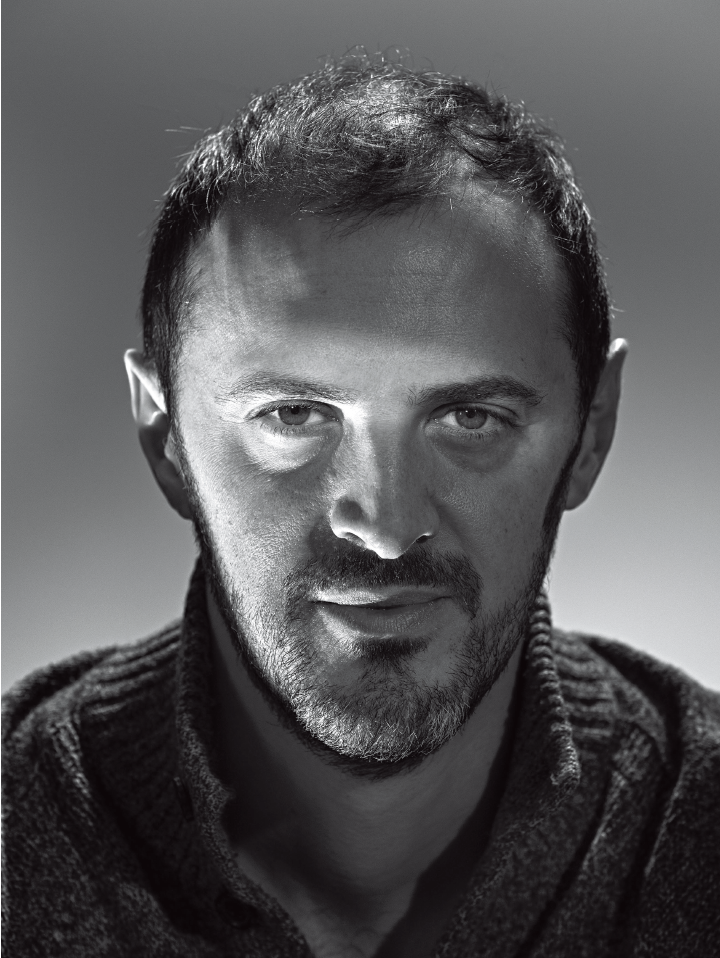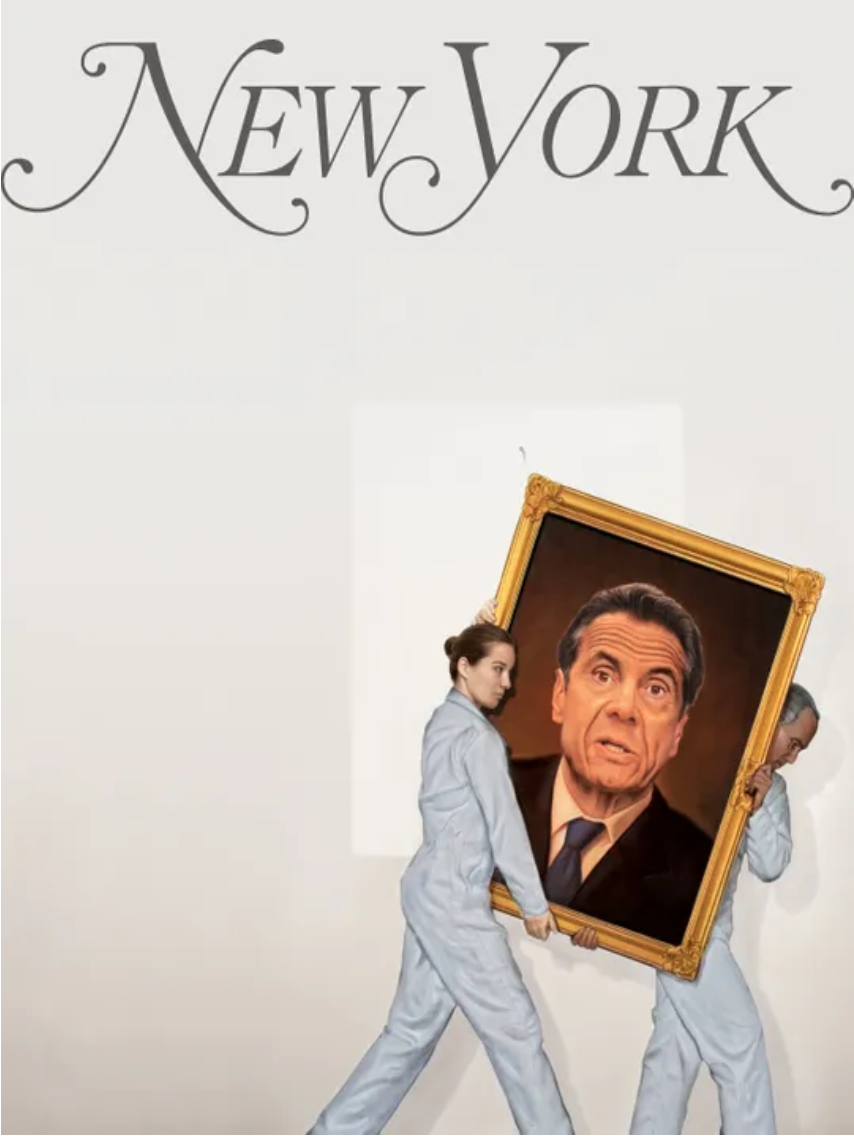“Last Sane Man on Wall Street”
New York, January 17, 2022
Nathan Anderson, the proprietor of Hindenburg Research, made his name by exposing—and betting against—corporate fraud. And this moment’s fake-it-till-you-make-it, flack-it-till-you-SPAC-it ethos has created a target-rich environment. But short-selling in a market that has proven impervious to reason, inflation, supply-chain instability and a plague that has killed millions of people can be a dangerous business—even if you’re right.
“The Cuomo Touch”
New York, August 13, 2021
“You can’t charm the nail into a board,” Andrew Cuomo said after his shocking resignation. “It has to be hit with a hammer.” This cover story—written with Laura Nahmias—sought to explain how the most powerful and feared governor in New York’s recent history turned himself into an unlikely hero of the pandemic, and then, with shocking swiftness, lost his grip on the only office that ever seemed to matter to him.
“The Gut Renovation of Ryan Serhant”
New York, February 15, 2021
With face of a soap opera star and and an unquenchable thirst for the camera’s attention, Manhattan real estate broker Ryan Serhant helped to turn Million Dollar Listing into a reality TV franchise. Then its phony reality bent real reality, transforming a onetime nobody into the plutocrat’s broker of choice.
“The Panic Attack of the Power Brokers”
New York, September 28, 2020
Six months into a pandemic that emptied its office buildings and rattled its psyche, New York City—and the people long accustomed to running it—confronted an uneasy public, unstable finances and an uncertain future.
“Alan Dershowitz Cannot Stop Talking”
New York, July 19, 2019
A few days after his former friend and client Jeffrey Epstein was arrested on sex-trafficking charges, I went to visit the famed attorney Alan Dershowitz at his summer home in Martha’s Vineyard. He offered up vigorous defense against allegations that he, too, was implicated in Epstein’s web of abuse.
“The Good, Bad Lawyer”
New York, September 30, 2018
For decades, David Boies was one of America’s most skilled—and feared—attorneys, a trusted counselor to difficult billionaires, a chatty friend to the press, and a courtroom champion of liberal causes (gay marriage, Al Gore’s case for the Florida recount). And for almost as long, Boies represented Harvey Weinstein, playing a key role in a years-long effort to stifle allegations of sexual assault against the movie producer. When Weinstein fell, though, his legal team’s secret machinations—including a dubious spy operation against journalists—were revealed to the world. As a lawyer, Boies was bound to represent his client zealously. But did he go too far?
“This is New York in the Not-So-Distant Future”
New York, September 7, 2016
”We know the water is coming. No serious thinker doubts this man-made reality any longer. Yet climate-change denial comes in subtler forms. Try as we might to contemplate how New York City might go under, our imagination fails us.”
“Who Shrunk the Mayor?”
New York, December 28, 2015
By almost any statistical measure, New York City was doing well under Mayor Bill de Blasio during his first term as mayor. Crime was low, the economy was thriving. Why, then, were so many people convinced that the city was going to the dogs, and that the mayor wass to blame? A study of harsh perceptions and political realities.
“BIG Deal”
Wired, October 2015
In 2015, the 40-year-old Danish architect Bjarke Ingels won the most important commission of his meteoric career: a 1,000-foot skyscraper at the World Trade Center. But for Ingels, getting the job was the easy part – the real test of his skills would come when he tried to turn his uncompromising vision into a commercial real estate development. “An architect’s work,” I wrote, “like the light of a star, only reaches the eye after a years-long journey.”
“A Glorious Boondoggle”
New York, March 9, 2015
Santiago Calatrava was commissioned to design an architectural extravagance at ground zero. He succeeded, an accomplishment that threatens to destroy his reputation. The story of the World Trade Center's $4 billion train station.
“The Red-Hot Rubble of East New York”
New York, January 26, 2015
One of the poorest neighborhoods in Brooklyn is suddenly the focus of both private speculators and City Hall, which wants to build thousands of units of affordable housing there — and by announcing its plans is fueling a land rush.
“Stash Pad”
New York, June 30, 2014
In 2014, it seemed that wealthy foreigners could think of no place more alluring, nor more secret, to invest their money than a high-priced New York City condo. With a little creative corporate structuring, property ownership here can be made as untraceable as a numbered bank account. But as Manhattan became an island haven for anonymous money—some of it from very dubious origins—New Yorkers with garden-variety affluence were facing disheartening price wars. Local buyers, competing for scarce inventory with investors seldom even turned on a light switch, were often left to wonder: Who are these people?
“The Gavel Drops at Sotheby's”
New York, March 11, 2014
The world’s oldest auction house sat at the center of a burgeoning new economy, a secretive marketplace where billionaires traded masterpieces like stocks. So why was Sotheby’s in turmoil—and under attack by its largest shareholder, the combative hedge fund manager Dan Loeb? Inside the treacherous fight for the peak of the art market.
“Why Run a Slum If You Can Make More Money Housing the Homeless?”
New York, December 1, 2013
The Podolsky brothers—convicted felons who were once called "terror lords" by the tabloids—made a fortune off gentrification, rousting low-paying tenants from their properties by sometimes ruthless tactics. Then they hit upon an even more profitable business model: sheltering New York's homeless. An investigation into a shadowy real estate empire (see map) that absorbs tens of millions in city funds each year.
“1 Million, 2 Million, 3 Million, 20 Million / Oh, I’m So Good at Math”
New York, July 15, 2013
The rise of the rapper Jay Z offers lessons in leveraging talent, managing risk and cashing out. An unauthorized audit of his fantastically successful business model.
“Does BuzzFeed Know the Secret?”
New York, April 8, 2013
Jonah Peretti’s viral-content machine purports to have solved the problems of journalism and advertising all at once, with the help of a simple algorithm.
“Jumping the Shark”
Bloomberg Businessweek, November 21, 2012
The impudent conceptual artist Damien Hirst thumbed his nose at the art market economy in 2008 when he auctioned $200 million of his work directly to bidders. Then came the crash.
“An Offer They Couldn’t Refuse”
New York Times Magazine, March 18, 2012
The Centria, a luxury Manhattan high rise, was marketed as a foreign investment property to the Irish elite. But what happened to the “Celtic Tiger Villas” when the the euro's roaring times came to an end?
“How To Build On Hallowed Ground”
Bloomberg Businessweek, August 3, 2011
Douglas Durst once said that One World Trade Center shouldn’t be built. Today, he’s a big reason why it towers over Ground Zero. On the 10th anniversary of September 11th, this cover story asked: What will be the ultimate cost of revival?
“The Commerce of Commemoration”
The Nation, January 21, 2005
Review of three books about the initial stages of the World Trade Center site’s redevelopment, including Paul Goldberger's Up From Zero.
“The Tightwad’s Legacy”
New York Times Magazine, April 6, 2008
In 1999, the eccentric Greenwich Village landlord William Gottlieb died, leaving behind an estate of ramshackle properties worth perhaps a billion dollars. Then his family started feuding.
“The Supersizer of Brooklyn”
New York Times Magazine, March 20, 2011
With a flair for the outrageous and a knack for gaming the zoning code, he proudly delivered premium prices and extra square footage for developers—until his influence became too obvious to ignore.






















